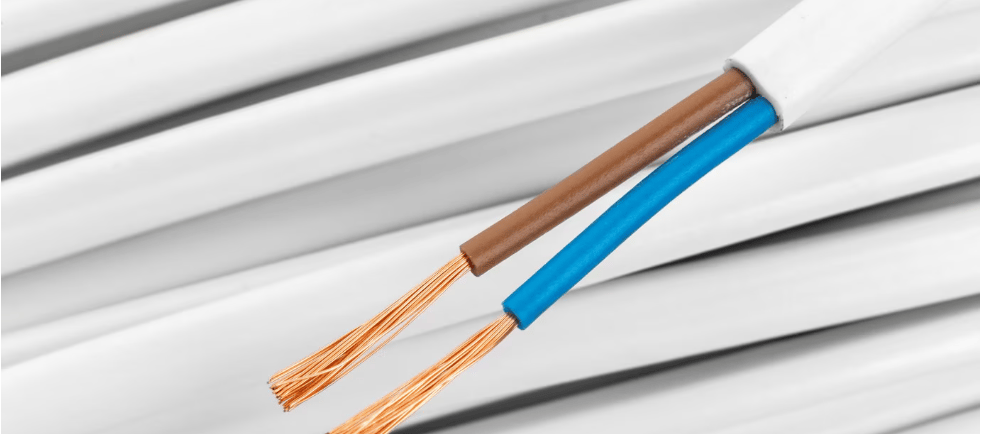How to Choose the Right Pendant Cable for Crane Control Systems
Selecting the right pendant cable is essential for ensuring the safety and efficiency of crane control systems, especially in industrial applications.
heron-sh
6/25/20253 min read


Selecting the right pendant cable is essential for ensuring the safety and efficiency of crane control systems, especially in industrial applications. When sourcing the ideal cable, factors like flexibility, durability, and environmental suitability should be on your checklist. Pendant cable wholesale buyers look for robust solutions that meet these benchmarks, particularly for heavy-duty use in cranes. Whether you are seeking a crane pendant cable manufacturer or exploring options for hoist pendant cable solutions, understanding the technical differences and key features can help you make an informed selection.
Table of contents:
Understanding the Differences Between Pendant Cable and Hoist Pendant Cable
Why Crane Pendant Cable Must Meet Industrial Flexibility and Durability Standards
Key Features to Look for in a Reliable Pendant Cable for Wet and Dry Environments
Understanding the Differences Between Pendant Cable and Hoist Pendant Cable
Choosing between a standard pendant cable and a hoist pendant cable requires insight into how these cables are constructed and designed for specific functions. While both cables share similarities in handling control system functionalities, hoist pendant cables generally incorporate features tailored for vertical lifting. For example, hoist pendant cables often include steel wire reinforcement to withstand tensile loads, ensuring stability during heavy lifting. Additionally, these cables are designed with robust insulation to handle high-stress environments, providing extra safety and reliability under heavy usage. Pendant cables, on the other hand, are built with flexibility in mind, allowing smooth horizontal motion across systems. These cables often come with advanced non-woven wraps to cushion impact and ensure overall longevity. They are also lightweight and easy to install, making them ideal for systems requiring frequent repositioning or adjustments. Buyers must differentiate between horizontal movement needs and load-bearing requirements when shortlisting a cable type, as selecting the wrong cable can lead to performance issues or premature wear.
Why Crane Pendant Cable Must Meet Industrial Flexibility and Durability Standards
Flexibility and durability are critical when evaluating any crane pendant cable. Industrial applications often operate under extreme conditions, and the cable needs to perform seamlessly without frequent wear and tear. Premium crane pendant cables integrate multiple strands of ultra-fine stranded copper wire, which offers both enhanced conductivity and superior flexibility. This conductivity ensures uninterrupted power and signal transmission even in demanding environments. Additionally, these cables are equipped with abrasion-resistant outer jackets to withstand friction and mechanical stresses. Some premium variants also feature UV-resistant coatings, which protect the cable from weather-related degradation in outdoor settings. Look for options that comply with standards like VDE0295CLASS 5, as these certifications ensure the product meets global quality benchmarks. A reliable crane pendant cable manufacturer will also design cables that are adaptable to both indoor and outdoor conditions, enhancing usability across wet and dry environments. These design features not only extend the cable's lifespan but also reduce maintenance frequency, saving time and costs for industrial operators.
Key Features to Look for in a Reliable Pendant Cable for Wet and Dry Environments
To ensure compatibility with variable environments, pendant cables must exhibit specific features designed to endure water, moisture, and extreme temperatures. One of the primary components to consider is the outer sheath material, often crafted with special PVC in compliance with IEC60227 standards. This material not only enhances the cable’s resistance to environmental changes but also ensures that its performance remains optimal in challenging climates. Adding to this, high-grade flexible construction facilitates easy installation in tight or complex spaces, an advantage for industries requiring intricate machine setups. Reliable hoist pendant cables often include a steel wire core to handle the tensile force, further optimizing their utility across diverse functional requirements. By partnering with a trusted pendant cable wholesale distributor, businesses can access customized solutions tailored to match operational demands.
Investing in the right cable not only promotes operational safety but also minimizes downtime caused by frequent maintenance or replacement. Whether you're exploring hoist pendant cable options or seeking a crane pendant cable manufacturer for bulk procurement, prioritize cables that meet international standards and offer versatility. Making well-informed purchases ensures that you’ll achieve greater efficiency and cost-effectiveness in your crane control systems.
